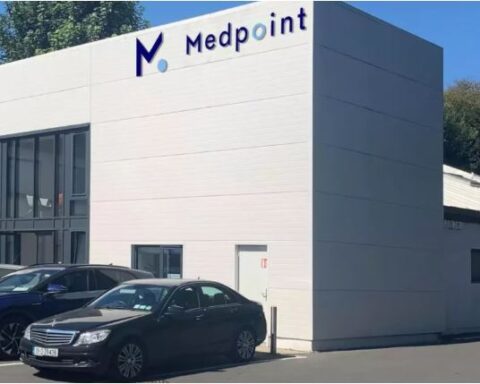The logistics industry is no longer about moving goods from point A to B — it’s about predicting, optimizing, and delivering smarter. Predictive analytics is leading this transformation, allowing businesses to anticipate disruptions, optimize delivery routes, and reduce operational waste. Today, companies are turning to a logistics app development company that integrates predictive algorithms, AI, and IoT into their software ecosystems to stay ahead of uncertainty and gain full control of supply chain visibility.
Predictive analytics isn’t just a tech upgrade, it’s a competitive necessity. Logistics leaders are using data models to foresee demand fluctuations, identify bottlenecks, and enhance fleet performance in real time. As margins tighten and customer expectations rise, logistics software powered by predictive insights is becoming the key to agility, efficiency, and long-term scalability.
What Predictive Analytics Really Means for Logistics Apps
Predictive analytics uses data, statistical algorithms, and machine learning to forecast future outcomes. In logistics, it’s the bridge between data and decision-making — helping companies act before problems occur.
For instance, instead of reacting to delays, predictive systems analyze traffic data, weather conditions, and vehicle health to forecast potential delivery issues. They then automatically reroute shipments or schedule maintenance before downtime happens. The result? Better on-time delivery rates and lower operational costs.
But the power of predictive analytics doesn’t end with transportation. Warehouse automation, inventory forecasting, and supply chain planning all benefit from predictive insights — allowing logistics businesses to operate with precision and confidence.
The Role of Custom Logistics Software Development in Predictive-Driven Systems
While off-the-shelf software offers basic tracking and reporting, predictive analytics requires deep customization and integration across business systems. That’s why companies are increasingly investing in custom logistics software development — to tailor data pipelines, integrate IoT devices, and apply machine learning models that align with their unique operations.
A custom logistics platform enables:
- Real-time data synchronization: IoT sensors and GPS devices feed continuous data into centralized dashboards for instant decision-making.
- Predictive route optimization: AI analyzes variables like distance, fuel consumption, and live traffic to plan the most efficient routes.
- Demand forecasting: Data models predict order volumes and warehouse needs to prevent stockouts or overstocking.
- Automated risk detection: The system identifies potential supply chain disruptions — from delays to regulatory issues — before they escalate.
By building customized predictive systems, logistics companies can move from reactive to proactive management — transforming how they operate and compete.
Why Predictive Analytics Is the Future of Logistics
According to a recent McKinsey & Company report, companies that implement data-driven logistics systems can cut operating costs by up to 15% and improve delivery accuracy by 35%. Predictive analytics lies at the heart of this shift.
Here’s how it’s redefining the logistics landscape:
Smarter Demand Forecasting
Predictive models analyze historical shipment data, seasonal trends, and economic signals to forecast demand accurately. This ensures that fleets and warehouses are adequately prepared without overspending on excess capacity.
Optimized Fleet Utilization
Fleet management apps powered by predictive analytics can analyze driver performance, vehicle usage, and fuel consumption to identify inefficiencies. Over time, this data enables better route planning and scheduling decisions.
Reduced Delivery Delays
With live traffic data and predictive algorithms, companies can preempt potential delays, reassign delivery routes, and keep customers updated in real time.
Improved Asset Maintenance
Predictive maintenance helps logistics companies identify potential breakdowns before they happen, extending the lifespan of assets and preventing costly downtime.
Integrating AI and Machine Learning in Predictive Logistics
AI and ML technologies are at the core of predictive logistics. These algorithms continuously learn from operational data — identifying trends, anomalies, and potential inefficiencies that human teams might overlook.
For example:
- AI-based ETA Predictions: By analyzing historical delivery data, weather conditions, and driver behavior, AI systems generate highly accurate estimated delivery times.
- Machine Learning for Route Planning: ML models automatically adjust delivery routes based on real-time conditions and past performance metrics.
- Anomaly Detection: Predictive analytics can flag unusual patterns, such as unexpected fuel consumption or frequent vehicle idling, allowing managers to address issues early.
These technologies not only enhance operational intelligence but also empower logistics teams to make faster, data-backed decisions that improve profitability and service quality.
How Predictive Analytics Improves Customer Experience
Customer satisfaction is one of the most overlooked benefits of predictive logistics. With real-time updates, accurate ETAs, and transparency in delivery tracking, predictive systems create trust between companies and their customers.
Moreover, predictive systems can proactively inform customers of potential delays, offering alternative delivery options or compensations — turning a negative experience into a loyalty-building moment.
According to a Gartner report, companies that integrate predictive analytics into their customer communication workflows see a 25% increase in customer retention rates. Predictive insights not only improve internal logistics operations but also enhance brand reputation and customer loyalty.
Challenges in Implementing Predictive Logistics (and How to Overcome Them)
While predictive analytics offers transformative potential, implementing it effectively requires overcoming key challenges:
Data Silos: Many logistics firms operate with fragmented systems. Integrating all data sources — from warehouse sensors to ERP software — is essential for predictive analytics to work effectively.
Data Quality: Inaccurate or incomplete data can distort predictive models. Businesses must prioritize data governance and validation mechanisms.
Scalability: Predictive analytics requires scalable infrastructure capable of handling massive data streams. Cloud integration can help reduce costs and improve processing power.
Skill Gaps: Many logistics companies lack in-house AI and data science expertise. Partnering with an experienced logistics app development company can bridge this gap through technical and strategic support.
Actionable Steps to Build Predictive Logistics Apps
- Start with Clear Objectives: Identify where predictive insights can create the most impact — route optimization, demand forecasting, or fleet maintenance.
- Integrate IoT Devices: Collect real-time operational data from vehicles, sensors, and warehouse systems.
- Leverage AI Models: Use machine learning to analyze patterns and predict future events.
- Develop Custom Dashboards: Provide real-time visibility for managers to act on predictive insights.
- Continuously Train Models: As data evolves, predictive models should be updated to stay accurate and relevant.
These steps ensure that predictive analytics adds measurable value to logistics operations instead of becoming just another IT expense.
Final Thoughts
The logistics industry’s next competitive edge lies in foresight — not just speed. Predictive analytics is giving businesses that advantage by turning data into decisions. From real-time visibility to proactive optimization, the impact of predictive logistics is profound.
Partnering with a logistics app development company that understands data-driven innovation can help businesses implement predictive analytics effectively and at scale. Combined with custom logistics software development, this approach transforms raw data into actionable intelligence — powering faster deliveries, lower costs, and smarter logistics operations.
The future belongs to companies that anticipate, not react — and predictive logistics is the tool that will take them there.








